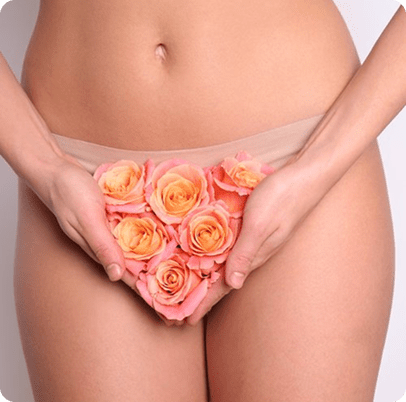
by laraibnaeem2005 | Oct 14, 2025 | Health
Understanding the Hymen Repair Healing Timeline is essential for anyone considering a restoration procedure. The healing process varies depending on the individual’s health, aftercare routine, and the type of procedure performed. Laser Hymenoplasty(ترقيع غشاء بكارة بالليزر) has become one of the most advanced and precise methods used today, offering faster recovery and minimal discomfort. Many women choose this option for personal, cultural, or emotional reasons, and knowing what to expect during recovery can ease concerns and ensure better outcomes. Whether performed through traditional techniques or modern laser methods, the recovery journey involves patience, proper hygiene, and adherence to aftercare instructions to achieve natural-looking results.
What Is Hymenoplasty And How It Works?
Hymen Repair in Dubai(جراحة غشاء البكارة في دبي) is a minor surgical procedure designed to reconstruct the hymen, a thin membrane that can tear due to physical activity, tampon use, or sexual intercourse. The treatment aims to restore the hymen’s original appearance, symbolizing virginity for cultural or personal reasons. During Hymenoplasty in Dubai(عملية غشاء بكارة في دبي), surgeons delicately stitch the torn edges together or use a thin tissue graft to recreate the natural structure. The process typically takes less than an hour, and patients can return home the same day. Healing usually begins immediately, with complete recovery expected within a few weeks. Choosing Laser Hymenoplasty in Dubai(عملية ترقيع غشاء بكارة بالليزر دبي) can further enhance precision, reduce scarring, and ensure faster tissue regeneration compared to traditional suturing methods.
Importance And Types Of Treatment:
The significance of hymen repair goes beyond physical restoration—it often provides emotional comfort and renewed confidence. Many women pursue Virginity Restoration Surgery(عملية اعادة العذرية) to align with cultural values or personal healing journeys. There are two main types of hymen reconstruction:
-
Simple Repair: Suitable for minor tears where the hymenal remnants are intact and can be stitched together.
-
Alloplant or Graft Technique: Used when there are insufficient remnants, and a small tissue graft is applied to reconstruct the membrane.
Some hospitals also offer advanced Laser Hymenoplasty(ترقيع غشاء بكارة بالليزر), which utilizes laser technology to create cleaner incisions and promote quicker healing. Reputable Hymenoplasty Hospitals in Dubai(مستشفيات ترقيع البكارة في دبي) often provide a safe and confidential environment for these procedures.
Preparation, Aftercare, And Healing Timeline:
Preparation involves a thorough consultation and medical assessment to ensure the candidate is in good health. Patients are usually advised to avoid certain medications, alcohol, and smoking before surgery to reduce bleeding risks. Post-procedure, mild discomfort or swelling may occur for a few days, but this typically subsides with proper care.
-
First Week: Light soreness and spotting may appear. Gentle cleansing and avoiding friction help speed up healing.
-
Second Week: Stitches begin to dissolve naturally; patients can resume light activities.
-
Third To Fourth Week: The tissue strengthens, and sensitivity reduces significantly.
-
Full Recovery: Usually achieved within 4–6 weeks, depending on the individual.
Aftercare is crucial—avoid strenuous activities, sexual intercourse, and swimming until cleared by the specialist. Maintaining hygiene and wearing loose clothing also prevent irritation.
Ideal Candidate And Choosing The Right Clinic:
The best candidates for Hymenoplasty(جراحة غشاء البكارة) are women in good physical health who wish to restore their hymen for personal or cultural reasons. Candidates should have realistic expectations and be emotionally prepared for the recovery process. Choosing a qualified facility is essential for safety and comfort. When selecting a clinic, consider the following:
-
Ensure the facility maintains confidentiality and a supportive atmosphere.
-
Verify the use of modern technology such as Laser Hymenoplasty(ترقيع غشاء بكارة بالليزر) for precision.
-
Check hygiene standards and patient feedback.
-
Confirm whether the procedure is performed by a skilled gynecological specialist experienced in delicate restorative surgeries.
While many wonder How much does a hymenoplasty cost in the UAE?(كم تكلف عملية ترقيع الغشاء في الإمارات), it’s more important to focus on the clinic’s safety record, privacy measures, and expertise for a satisfactory result.
Risks, Benefits, And Frequently Asked Questions:
Every surgical procedure carries minimal risks such as temporary swelling, mild bleeding, or infection if aftercare isn’t followed. However, modern laser-based techniques greatly minimize these possibilities. The key benefits of Laser Hymenoplasty in Dubai(عملية ترقيع غشاء بكارة بالليزر دبي) include:
-
Minimal scarring and faster recovery
-
Natural-looking results
-
Improved self-confidence
-
Quick procedure with same-day discharge
FAQs:
-
How long does recovery take? Usually 4–6 weeks.
-
Is it painful? Mild discomfort may occur, but pain is manageable.
-
Can it restore virginity completely? It reconstructs the hymen’s structure, giving the physical appearance of restoration.
-
How soon can one resume normal activities? Light activities within a week; full activity after 4–6 weeks.
Conclusion:
The Hymen Repair Healing Timeline depends on the individual’s healing rate and the surgical method used. Procedures like Laser Hymenoplasty(ترقيع غشاء بكارة بالليزر) offer smoother results, quicker recovery, and minimal pain. With proper preparation, aftercare, and the right clinic selection, women can achieve both physical and emotional restoration through Hymenoplasty(عملية تجميل غشاء البكارة). Whether for personal healing or cultural reasons, this delicate procedure continues to empower women seeking renewal and confidence through Virginity Restoration Surgery(عملية اعادة العذرية) in safe and professional environments across Hymenoplasty Hospitals in Dubai(مستشفيات ترقيع البكارة في دبي).
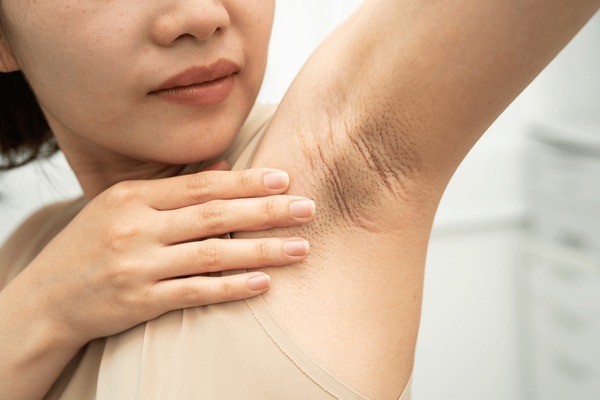
by laraibnaeem2005 | Oct 13, 2025 | Health
Many people use chemical peels to lighten and smooth their underarms, but not everyone achieves the desired results. Some notice that their armpits become darker instead of brighter after the treatment. This leads to a common question — what ingredients in peels actually cause this darkening? Understanding this helps avoid irritation, sensitivity, and unwanted pigmentation. From Underarm Peeling (تقشير الابط) to professional options, it’s crucial to know which compounds might trigger pigmentation instead of improving it. Based on My Experience with Underarm Peeling (تجربتي مع تقشير الابط), awareness of chemical formulations can prevent the frustrating issue of Darkness After Chemical Peeling (السواد بعد التقشير الكيميائي) and support better recovery results.
What Is Treatment And How It Works?
Peeling treatments are designed to remove the top layer of dead and pigmented cells, encouraging new, even-toned skin to form. When used correctly, Armpit hyperpigmentation after chemical peeling in Dubai(فرط تصبغ الإبط بعد التقشير الكيميائي في دبي) helps in minimizing discoloration and rough texture. However, some peels contain harsh acids or high concentrations that can cause burns or inflammation. These reactions can trigger melanin overproduction, resulting in Underarm Pigmentation (تصبغات تحت الإبط) or even Underarm Melasma (كلف تحت الابط). Ingredients like trichloroacetic acid (TCA), glycolic acid, or phenol can be too strong for sensitive areas like underarms if not balanced properly. The key lies in matching the strength of the peel to your skin’s tolerance to avoid Skin Discoloration After Cold Peeling (تغير لون الجلد بعد التقشير البارد).
Types Of Treatment:
Different types of peeling agents can be used under the arms, and each affects the skin differently:
-
Fruit Acid Peeling (احماض الفواكه مقشر): Milder peels using natural acids from fruits like lactic or citric acid, suitable for gentle exfoliation.
-
Enzyme-based peels: Derived from natural sources like papaya or pineapple to refresh dull skin.
-
Chemical formulations: Containing glycolic acid, lactic acid, or low-percentage TCA for deeper exfoliation.
-
Underarm Peeling in Clinics (تقشير الإبط في العيادات): Usually combines chemical and natural acids for more controlled results.
If a peel is too strong or left for too long, it can lead to inflammation, sensitivity, and rebound pigmentation. The Harmful Effects of Underarm Peeling (أضرار تقشير الإبط) often occur when users try at-home peels without proper guidance or fail to neutralize the acid correctly.
Preparation And Aftercare:
Proper preparation and aftercare are essential for avoiding Darkness After Chemical Peeling (السواد بعد التقشير الكيميائي). Before treatment, ensure your underarms are clean, dry, and free from deodorants or fragrances. Post-peel care is equally important — hydration, gentle cleansers, and sunscreen play a major role in recovery. Avoid friction, shaving, or deodorants for at least a few days after the procedure. In my review of My Experience with Underarm Peeling (تجربتي مع تقشير الإبط), skipping aftercare steps was one of the main reasons for irritation and uneven results. Moisturizing helps prevent flaking and reduces the risk of post-inflammatory hyperpigmentation. If discoloration does occur, Treatment of Pigmentation After Peeling (علاج التصبغات بعد التقشير) can help fade the marks gradually.
Ideal Candidate:
The ideal candidate for Underarm Peeling (تقشر الابط) should have mild to moderate pigmentation, smooth skin, and no recent irritation or infection in the area. People with sensitive or allergy-prone skin should avoid strong chemical formulas. If you have darker skin tones, choosing milder acids is essential to prevent The Harmful Effects of Cold Peeling on the Armpits (أضرار التقشير البارد للابط) and potential burns. Reading about Stages of Chemical Facial Peeling with Pictures (مراحل التقشير الكيميائي للوجة بالصور) can also help visualize how the peeling process unfolds layer by layer, helping set realistic expectations. Always perform a patch test before applying any peeling solution to larger areas.
Risks And Benefits:
Chemical peeling for underarms can offer several benefits: smoother texture, brighter skin tone, and reduced odor-causing bacteria. However, risks increase when harsh acids are used improperly. Possible side effects include redness, itching, peeling, and dark patches. These often result from poor product selection or ignoring skin sensitivity. Underarm Peeling in Clinics (تقشير الإبط في العيادات) generally provides safer outcomes because professionals assess skin types before application. Nonetheless, overuse or improper neutralization may result in Skin Discoloration After Cold Peeling (تغير لون الجلد بعد التقشير البارد) or Underarm Pigmentation (تصبغات تحت الإبط). To minimize these risks, apply soothing ointments and avoid exposing the area to heat or friction immediately after peeling.
FAQs:
1. Why do armpits darken after using peels?
Harsh ingredients and overexposure can trigger melanin production, leading to darkening.
2. Can natural peels prevent darkening?
Yes, mild natural peels like Fruit Acid Peeling (احماض الفواكه مقشر) are safer options that gently renew the skin.
3. How long does it take for underarm skin to recover?
Recovery may take 7–10 days, depending on the depth and strength of the peel.
4. What should I avoid after a peel?
Avoid shaving, deodorant use, and direct sunlight for at least a few days post-peel.
5. Can pigmentation after a peel be reversed?
Yes, Treatment of Pigmentation After Peeling (علاج التصبغات بعد التقشير) can gradually restore even skin tone.
Conclusion:
Understanding which ingredients cause armpit darkening after a peel can save you from post-treatment frustration. Strong acids and improper concentrations often lead to Armpit hyperpigmentation(فرط تصبغ الإبط) and irritation. Prioritizing gentle exfoliation, proper aftercare, and professional guidance ensures smoother, brighter results without complications. Whether you’re exploring Chemical Peeling of the Armpits (تقشير كيميائي للابط) or Fruit Acid Peeling (احماض الفواكه مقشر), being informed about the ingredients and their effects is essential for achieving the best outcome. Based on My Experience with Underarm Peeling (تجربتي مع تقشير الابط), careful selection of peeling agents and consistent aftercare play the biggest role in preventing pigmentation and achieving beautifully even-toned underarms.
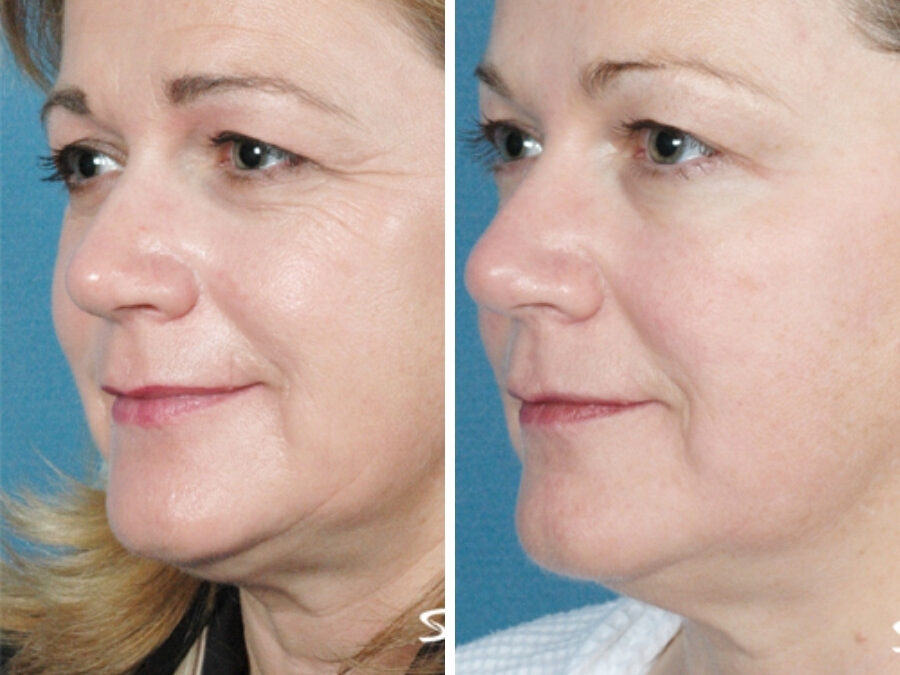
by laraibnaeem2005 | Oct 9, 2025 | Health
Sagging jowls are one of the earliest signs of facial aging, often making the face look tired and less defined. People searching for non-surgical ways to lift and contour their jawline often turn to Laser Skin Tightening (شد الجلد بالليزر) for effective results. This advanced technology uses controlled laser energy to stimulate collagen production, improving skin elasticity and firmness. Many individuals wonder whether this treatment can truly tighten sagging jowls and enhance facial contours without surgery. Let’s explore how it works, its benefits, and what you can expect from the process.
What Is The Treatment And How It Works?
Laser skin tightening in Dubai(شد الجلد بالليزر في دبي) is a non-invasive cosmetic procedure designed to rejuvenate loose or sagging skin by promoting collagen remodeling beneath the surface. During the procedure, laser energy heats the deeper layers of the skin, triggering the body’s natural healing response. Over time, new collagen fibers form, tightening and smoothing the skin’s texture.
This treatment is especially beneficial for mild to moderate jowl sagging, as it gently lifts the lower face area without damaging the surrounding tissues. For those seeking additional enhancement, some combine it with Laser Facelift (شد الوجه بالليزر) to achieve more comprehensive anti-aging results.
Importance Of Treatment:
Maintaining facial firmness plays a vital role in preserving a youthful look. As collagen levels decrease with age, the jawline begins to lose its definition. Laser Skin Tightening (شد الجلد بالليزر) helps restore that definition by tightening the skin naturally.
The key advantages include:
-
Non-surgical rejuvenation without downtime
-
Natural collagen stimulation for longer-lasting firmness
-
Improved jawline contouring and smoother skin tone
In addition, patients seeking complementary skin care solutions often explore Skin Resurfacing in Abu Dhabi (تسطيح البشرة في أبو ظبي) or Eye Skin Resurfacing (تسطيح البشرة في العين) to target texture and fine lines in specific areas.
Types Of Treatment:
Different laser technologies can address sagging jowls effectively, depending on the skin type and severity of laxity. Some common types include:
-
Infrared Laser Therapy: Focuses heat deep within the dermis for gradual lifting.
-
Radiofrequency Laser: Combines RF energy with light-based treatment for enhanced collagen production.
-
Fractional Laser Systems: Treat specific skin zones for precise tightening and minimal downtime.
These systems are often available at Laser Skin Treatment Centers (مراكز علاج الجلد بالليزر) that specialize in non-invasive facial rejuvenation.
Preparation And Aftercare:
Before undergoing the procedure, patients are advised to:
-
Avoid direct sun exposure for at least a week.
-
Refrain from using harsh exfoliants or retinoids.
-
Keep skin hydrated to promote healing.
After the session, mild redness or warmth may occur, which subsides quickly. To enhance and maintain results, it’s recommended to follow a proper skincare routine and avoid excessive heat or sunlight for a few days. Many individuals pair their treatments with Hand Rejuvenation in Abu Dhabi (تجديد شباب اليدين في أبو ظبي) for an overall youthful appearance.
Ideal Candidate:
The best candidates for this treatment include individuals with mild to moderate sagging around the jawline and neck who prefer a non-surgical approach. Those with significant skin laxity may require more advanced methods. People who maintain a stable weight and practice good skincare habits typically achieve the most satisfying results.
How To Choose The Right Clinic?
When selecting a center for laser skin tightening, look for:
-
Advanced laser equipment and certified technology
-
A hygienic and safe environment
-
Qualified staff with aesthetic expertise
You may also consider specialized locations offering Ear Piercing in Sharjah (ثقب الأذن في الشارقة) or similar cosmetic enhancements, which often indicate comprehensive aesthetic services under one roof.
Risks And Benefits:
While the procedure is generally safe, potential side effects may include temporary redness or mild swelling. The benefits, however, far outweigh the risks:
-
Enhanced skin firmness
-
Improved jawline definition
-
Gradual, natural-looking lift
-
Minimal downtime and discomfort
Consistency in treatment and proper aftercare ensure long-lasting results.
Faqs:
Does laser skin tightening hurt?
Most patients report a warm sensation but minimal discomfort.
How many sessions are needed?
Typically, 3–6 sessions spaced weeks apart yield optimal results.
When will results be visible?
Some tightening is immediate, while full improvement develops over several months.
Can I combine it with other treatments?
Yes, many patients pair it with Laser Facelift (شد الوجه بالليزر) or resurfacing options for enhanced rejuvenation.
Conclusion:
In summary, Laser skin tightening(شد الجلد بالليزر) is a safe and effective solution for improving sagging jowls and redefining facial contours. With consistent sessions at reputable Laser Skin Treatment Centers (مراكز علاج الجلد بالليزر), individuals can experience visibly firmer skin without surgical intervention. Combined with complementary procedures like Skin Resurfacing in Abu Dhabi (تسطيح البشرة في أبو ظبي) or Hand Rejuvenation in Abu Dhabi (تجديد شباب اليدين في أبو ظبي), it offers a complete facial and body rejuvenation experience.
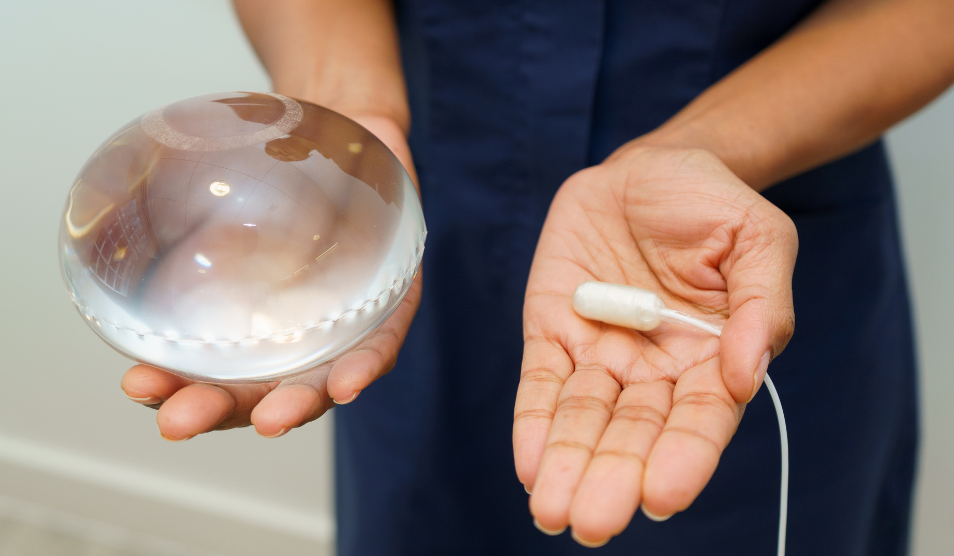
by laraibnaeem2005 | Oct 8, 2025 | Health
The Gastric Balloon in the UAE(بالون المعدة في الامارات) has emerged as a popular non-surgical weight loss option for individuals seeking effective results without undergoing invasive procedures like Gastric Sleeve Dubai(قص المعدة دبي) surgery. By temporarily reducing stomach capacity, this procedure helps patients feel fuller for longer, control portion sizes, and achieve gradual weight loss. Unlike permanent surgical interventions, the gastric balloon is a reversible and less intrusive alternative, making it suitable for many adults aiming to improve their health and lifestyle.
What Is Gastric Balloon Treatment and How It Works?
A Gastric Balloon in Dubai(وضع بالون المعدة في دبي) involves placing a soft, inflatable balloon into the stomach, either via Gastric Balloon Endoscopy(بالون المعدة بالمنظار) or a swallowable capsule. Once in the stomach, the balloon occupies space, which slows digestion and promotes early satiety. Patients naturally reduce food intake, aiding weight loss. The balloon remains in place for several months, after which it is safely removed.
Importance of Gastric Balloon Treatment:
-
Encourages portion control and healthier eating habits
-
Promotes gradual, sustainable weight loss
-
Reduces the risk of obesity-related conditions such as diabetes and hypertension
-
Provides a non-surgical, reversible solution for weight management
Types of Gastric Balloon Treatments:
Several variations of gastric balloon treatments exist to meet individual needs and preferences:
Endoscopic Balloon:
-
Inserted using Gastric Balloon Endoscopy(بالون المعدة بالمنظار)
-
Stays in the stomach for up to six months
-
Allows for precise monitoring and follow-up
Swallowable Capsule Balloon:
-
Taken orally and self-inflates inside the stomach
-
Linked to Gastric Capsule Price in the UAE(سعر كبسولة المعدة في الإمارات) and Gastric Capsule Cost(تكلفة كبسولة المعدة)
-
Offers a non-invasive alternative for patients who prefer minimal procedures
Adjustable Balloon Systems:
Preparation and Aftercare:
Proper preparation and aftercare are essential to maximize weight loss results and minimize complications.
Pre-Procedure Preparation:
-
Follow a liquid diet 24–48 hours before insertion
-
Avoid alcohol and certain medications as advised
-
Inform about previous stomach surgeries or gastrointestinal issues
-
Arrange for support post-procedure
Post-Procedure Aftercare:
-
Begin with liquids, progress to soft foods, then solids
-
Avoid carbonated, fried, and high-sugar foods
-
Eat slowly and chew thoroughly
-
Stay hydrated and gradually resume physical activity
-
Monitor for nausea, vomiting, or unusual discomfort
Ideal Candidate:
The Gastric Balloon in Dubai(بالون المعدة في دبي) is ideal for:
-
Individuals with a BMI between 27 and 35
-
Those struggling with traditional weight loss methods
-
Patients committed to post-procedure lifestyle changes
-
Individuals without gastrointestinal disorders or previous stomach surgeries
Those with severe obesity or higher BMI may benefit more from Gastric Balloon(وضع بالون المعدة) surgery, which offers permanent results.
How to Choose the Right Clinic?
-
Select accredited and experienced facilities
-
Ensure access to multiple balloon types for personalized treatment
-
Verify inclusion of dietary and lifestyle support
-
Confirm post-procedure follow-ups
-
Review patient outcomes and testimonials for quality assurance
Risks and Benefits:
Risks of Gastric Balloon:
-
Temporary nausea, vomiting, or bloating in the first few days
-
Abdominal discomfort or cramping
-
Rare balloon deflation or migration
-
Acid reflux or gastritis in sensitive individuals
-
Reduced effectiveness without adherence to dietary guidelines
Benefits of Gastric Balloon:
-
Promotes early satiety and portion control
-
Encourages gradual, sustainable weight loss
-
Non-surgical, reversible, and minimally invasive
-
Improves metabolic health and reduces obesity-related risks
-
Motivates long-term healthy lifestyle changes
FAQs:
How Much Does a Gastric Balloon Cost?
Patients often inquire about Gastric Balloon Price(سعر بالون المعدة), How Much Does a Gastric Balloon Cost?(كم سعر بالون المعده), and Gastric Balloon Cost in the UAE(تكلفة بالون المعدة في الامارات). Prices vary depending on balloon type and location, including Gastric Balloon in Al Ain(بالون المعدة في العين) and Gastric Balloon in Abu Dhabi(بالون المعدة في أبو ظبي).
Is the Gastric Balloon Suitable for Everyone?
While generally safe, it may not be recommended for patients with gastrointestinal disorders, previous stomach surgeries, or certain medical conditions.
How Long Will Weight Loss Last?
Weight loss is most effective when combined with a balanced diet and regular exercise. Lifestyle adherence is crucial to maintain results.
Can the Balloon Improve Health Conditions?
Yes, weight loss achieved through the gastric balloon can help manage obesity-related conditions like diabetes, hypertension, and joint pain.
Are There Alternatives?
Surgical options like Gastric Sleeve Dubai(قص المعدة دبي) provide permanent solutions, whereas the gastric balloon is temporary and reversible.
Is Support Available During Treatment?
Comprehensive support, including dietary guidance and lifestyle counseling, maximizes results and reduces complications. Holistic programs, such as Drug Addiction Treatment for Women(علاج ادمان المخدرات للسيدات), highlight the importance of overall health management.
Conclusion:
The Gastric Balloon in the UAE(بالون المعدة في الامارات) is an effective non-surgical option for weight loss, promoting early satiety, portion control, and gradual weight reduction. When combined with proper diet, exercise, and lifestyle modifications, it offers a safe and reversible alternative to surgical procedures like Gastric Sleeve Dubai(قص المعدة دبي). For patients committed to long-term health and behavioral changes, the gastric balloon can be an excellent choice for achieving and maintaining weight loss goals.
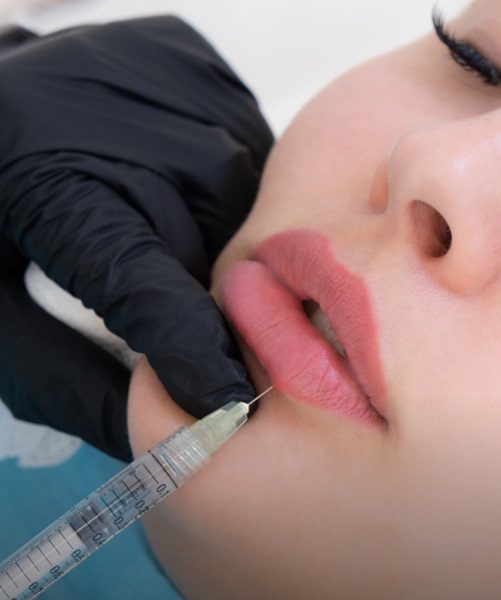
by laraibnaeem2005 | Oct 7, 2025 | Health
One of the most common questions people ask before getting Russian lip fillers is whether they change the natural texture of the lips. Since this popular treatment focuses on enhancing shape and definition, it’s natural to wonder if it affects how the lips feel or look up close. The good news is that Russian lip fillers are specifically designed to maintain a soft, smooth, and natural texture while enhancing the lips’ overall structure. By using advanced filler placement techniques, this method enhances the vertical height and cupid’s bow without creating a stiff or artificial appearance. Understanding how the treatment works can help you feel confident about achieving both beauty and natural texture.
What Is The Treatment And How It Works?
The Russian lip fillers in Dubai(حشوات الشفاه الروسية في دبي) is a precise method that focuses on lifting the lips rather than adding excessive outward projection. Using hyaluronic acid-based fillers, specialists inject small amounts vertically from the lip border toward the center. This creates the signature “heart-shaped” look associated with Russian-style lips. Because the filler is evenly distributed and deeply integrated into the lip tissue, it maintains natural softness while improving hydration. The structure of hyaluronic acid attracts water molecules, which helps enhance lip texture, giving them a smoother, more supple feel. Over time, the filler blends seamlessly with the lips’ natural tissue, enhancing both appearance and texture without a heavy or bumpy finish.
Importance Of The Treatment:
The importance of Russian lip fillers goes beyond shaping and contouring — they also improve lip hydration and texture. This treatment helps address dryness, fine lines, and unevenness that can make the lips appear dull or cracked. Here’s why the technique is beneficial for texture improvement:
-
Hyaluronic acid deeply hydrates the lips, enhancing smoothness
-
The precise injection pattern maintains natural elasticity
-
It reduces the appearance of fine lines around the mouth
-
Promotes a naturally soft, plump lip surface
Because of the advanced filler placement, the lips retain their natural movement and flexibility, which is ideal for anyone who wants fuller yet naturally textured lips that look and feel real.
Types Of Treatment And Filler Textures:
Different types of Russian lip fillers and techniques can slightly influence how your lips feel after the treatment. The consistency of the filler chosen plays an important role in achieving the desired texture.
-
Soft fillers: Ideal for first-timers seeking a smooth and subtle enhancement while maintaining a natural texture.
-
Medium-density fillers: Offer more definition and structure without compromising softness.
-
Advanced lift fillers: Best for those looking for sharper definition and height while keeping lips hydrated.
Since every person’s lips have a unique structure, the type of filler and injection depth are customized to preserve a soft, touchable texture. After the filler integrates, most people notice that their lips actually feel smoother and more hydrated than before.
Preparation And Aftercare:
Before getting Russian lip fillers, preparation and aftercare are crucial for ensuring an even, soft texture. Here are simple steps to follow:
Preparation tips:
-
Stay hydrated for several days before treatment to improve filler absorption.
-
Avoid alcohol and caffeine 24 hours before your appointment.
-
Keep your lips moisturized with a gentle balm.
Aftercare tips:
-
Avoid hot beverages and strenuous activities for the first 24 hours.
-
Do not press, bite, or massage the lips unless instructed.
-
Keep the lips clean and hydrated during recovery.
-
Avoid harsh exfoliation or lip products until any swelling subsides.
Following these steps helps the filler settle properly, ensuring the final texture is soft, smooth, and naturally enhanced.
Ideal Candidate:
The ideal candidate for Russian lip fillers is someone who wants to improve lip shape, symmetry, and hydration without compromising natural feel. It’s suitable for individuals who:
-
Have naturally dry or textured lips
-
Want subtle enhancement with a defined shape
-
Desire a natural, soft finish instead of a firm one
-
Are looking for long-lasting smoothness and balanced hydration
This treatment works for most skin types and lip shapes, as it focuses on internal hydration and lift rather than just volume expansion. It’s especially ideal for first-timers who want noticeable yet realistic results.
How To Choose The Right Clinic?
When getting Russian lip fillers, choosing the right clinic determines both safety and the final texture outcome. Since the treatment requires precision and artistry, you should look for:
-
A qualified practitioner experienced in the Russian technique
-
Use of high-quality, approved fillers with a natural consistency
-
Good client reviews and authentic before-and-after photos
-
Transparent consultation discussing your goals and lip anatomy
A skilled professional understands how to achieve lift and volume while preserving the lips’ natural softness and mobility, ensuring your results look flawless yet realistic.
Risks And Benefits:
While Russian lip fillers(حشوات الشفاه الروسية) are safe and effective, it’s important to understand their potential risks and benefits before deciding.
Possible Risks:
-
Temporary swelling, bruising, or tenderness
-
Slight unevenness that resolves as the filler settles
-
Rare allergic reactions to filler components
Key Benefits:
-
Enhanced smoothness and softness in lip texture
-
Long-lasting hydration and elasticity
-
Improved symmetry and definition
-
Natural appearance with minimal downtime
For most individuals, the benefits significantly outweigh the temporary side effects, especially when the procedure is performed correctly.
FAQs:
Do Russian lip fillers make lips feel hard?
No, when done properly, the lips remain soft and natural to the touch.
Can they smooth out fine lines?
Yes, hyaluronic acid improves skin texture and reduces lip wrinkles.
How long does the smoothness last?
Results typically last 6–12 months depending on metabolism.
Is lip texture different right after the procedure?
Mild firmness is normal at first but softens as swelling reduces.
Can I wear lip balm after treatment?
Yes, after 24 hours, gentle moisturizing balms help maintain hydration.
Conclusion:
So, do Russian lip fillers change lip texture? They actually enhance it. With their focus on lift, hydration, and precision, this treatment delivers lips that look plumper, smoother, and more defined without feeling artificial. The technique ensures that the lips remain soft, flexible, and naturally beautiful while subtly improving texture and balance. With proper preparation, care, and professional application, Russian lip fillers can transform not only the shape but also the overall quality of your lips — giving you a perfect blend of structure and softness that feels just as good as it looks.





